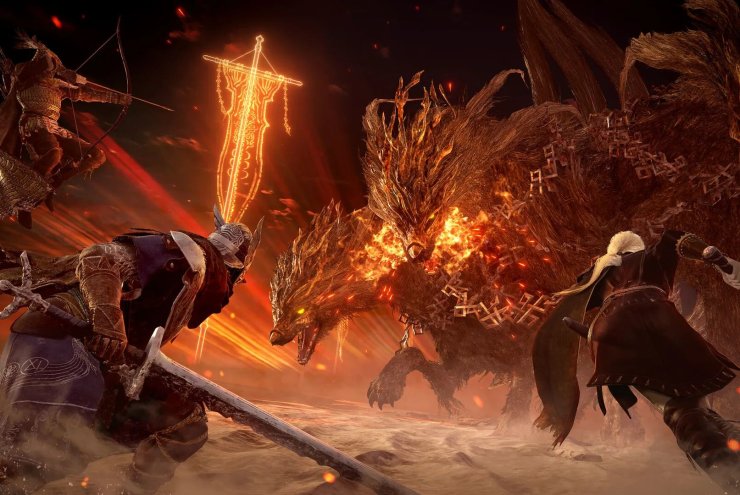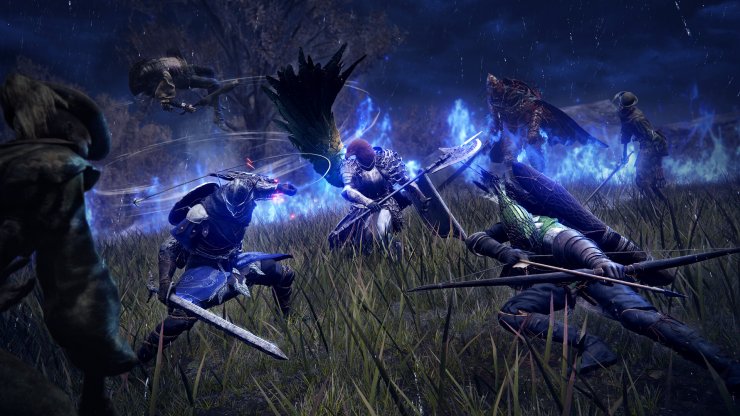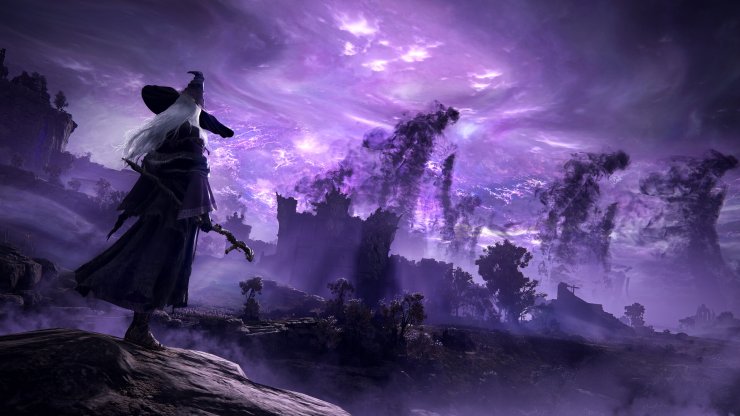Elden Ring: Nightreign drops on May 30, 2025, bringing co-op action to the Elden Ring universe with randomized environments and a 60 FPS cap. To help you get the best performance on PC, this guide tweaks graphics settings for smooth gameplay and decent visuals, based on Elden Ring optimization tips and Nightreign’s system requirements. Whether you’re rocking a budget rig or a high-end setup, here’s how to optimize your experience.
System Requirements for Elden Ring: Nightreign

Minimum:
-
CPU: Intel Core i5-10600 or AMD Ryzen 5 5500
-
GPU: NVIDIA GeForce GTX 1060 (6GB) or AMD Radeon RX 580
-
RAM: 12 GB
-
Storage: 30 GB SSD
-
OS: Windows 10 (latest updates)
Recommended:
-
CPU: Intel Core i5-11500 or AMD Ryzen 5 5600
-
GPU: NVIDIA GeForce GTX 1070 or AMD Radeon RX Vega 56
-
RAM: 16 GB
-
Storage: 30 GB SSD
-
OS: Windows 10 or newer
Recommended Graphics Settings

Graphics Quality Preset: High
-
Kick things off with High for a nice mix of sharp visuals and smooth performance. Maximum looks a bit better but can tank FPS on mid-range rigs. Only drop to Medium or Low if your setup’s struggling, as they make textures and shadows look rough.
-
Why: High keeps Limveld’s details crisp without killing your frame rate.
Resolution: 1080p or 1440p
-
Stick to 1080p for older GPUs like the GTX 1060 to hit 60 FPS. With a GTX 1070 or better, 1440p works but might need some tweaks. 4K is tough—even an RTX 4090 might not hit 60 FPS steadily due to CPU limits.
-
Tip: Drop to 1080p if 1440p feels choppy.
Texture Quality: High
-
Go High if your GPU has 6 GB VRAM or more (like a GTX 1060). Drop to Medium for 4 GB cards to avoid hitching.
-
Why: High textures make Limveld’s world pop without eating too many frames.
Shadow Quality: Medium or Low
-
Shadows are a performance hog. Set Medium for a decent look or Low on weaker GPUs for a solid FPS boost (like 5-10 FPS at 1440p).
-
Why: Shadows hit hard, especially with Nightreign’s day-night switches and busy fights. Low still looks okay.
Anti-Aliasing Quality: High (1080p) or Medium (1440p+)
-
At 1080p, keep High to smooth out jagged lines without much FPS cost. At 1440p or 4K, Medium or Low is fine since higher resolutions hide jaggies better.
-
Why: Anti-aliasing cleans up edges but matters less at high resolutions.
SSAO (Screen Space Ambient Occlusion): Medium or Low
-
Try Medium for decent lighting or Low for a 3-5 FPS bump on weaker GPUs. Turning it off saves more FPS but makes the world look flat.
-
Why: SSAO adds depth to lighting but taxes performance in Limveld’s open areas.
Depth of Field: Off
-
Shut this off for a quick FPS boost (up to 5 FPS at 1440p). It blurs far-off stuff, which you won’t miss in Nightreign’s fast fights.
-
Why: Saves resources without hurting the visuals much.
Motion Blur: Off
-
Ditch motion blur to lighten the GPU load and make combat clearer. It’s not a big loss visually but helps responsiveness.
-
Why: Motion blur can mess with visibility in co-op battles.
Ray Tracing: Off
-
If Nightreign has ray tracing like Elden Ring did later, turn it off unless you’ve got a beefy RTX GPU (3070 or better). It kills FPS for minimal visual gain.
-
Why: Ray tracing’s pretty but way too demanding for most setups.
Volumetric Quality: Medium
-
Set Medium to keep cool fog and cloud effects in Limveld’s weather and night cycles. Drop to Low if FPS tanks in open areas.
-
Why: Volumetrics look great but hit performance in big spaces.
Reflection Quality: Medium
-
Use Medium for nice water and surface reflections. Go Low on weaker GPUs to save FPS.
-
Why: Reflections add flair but aren’t a big deal in Nightreign’s action-heavy gameplay.
Global Illumination: Medium
-
Stick with Medium for solid lighting or Low for older PCs. This affects how light hits the world, key for Nightreign’s day-night shifts.
-
Why: Medium looks good without dragging performance down too much.
Additional Optimization Tips

-
Update GPU Drivers: Grab the latest NVIDIA, AMD, or Intel drivers to avoid slowdowns. Elden Ring got driver boosts, and Nightreign likely will too.
-
Enable Hardware Optimizations:
-
Turn on Resizable BAR, Game Mode, and Hardware-accelerated GPU Scheduling (HAGS) in Windows for better performance.
-
Set Windows to High Performance power mode and tweak your GPU to prioritize performance in NVIDIA/AMD settings.
-
-
Track FPS: Use tools like MSI Afterburner or Overwolf’s FPS Monitor to spot performance issues.
-
Network for Co-op: Nightreign’s online-only, so high ping can make things feel laggy.
-
V-Sync/G-Sync: Turn on V-Sync or G-Sync to stop screen tearing if your FPS jumps around. If you’re using an FPS unlocker mod (like Elden Ring FPS Unlocker), turn off V-Sync in the NVIDIA panel, but know it breaks online play.
-
Overclocking: If you’re just shy of 60 FPS, try overclocking your GPU or enabling XMP/EXPO for RAM.
-
CPU Bottlenecks: At 1080p or 1440p, Nightreign might lean hard on your CPU. If it’s old, consider upgrading to something like a Ryzen 5 5600.
Performance Expectations
-
Low-End PCs (e.g., GTX 1060, Ryzen 5 5500): At 1080p with Medium/Low settings (shadows Low, anti-aliasing Medium), you’ll get 45-56 FPS in tough spots like boss fights or Limveld’s camps.
-
Mid-Range PCs (e.g., GTX 1070, Ryzen 5 5600): At 1080p or 1440p on High, expect a steady 60 FPS, maybe dipping to 48-55 in crazy multiplayer moments.
-
High-End PCs (e.g., RTX 3060, Core i5-12400): At 1440p or 4K with High/Maximum settings, you’ll max out at 60 FPS with rare drops.
-
Beta Info: The PS5 beta ran Quality Mode at 2160p/40 FPS and Performance Mode at 1080p-1800p/60 FPS. PCs should hit similar marks, with mid-range GPUs nailing 60 FPS at 1080p High.
Notes for Nightreign Specifics
- No Ultrawide Support: Like Elden Ring, Nightreign probably won’t play nice with ultrawide monitors, so expect black bars or stretching unless mods fix it.
-
No DLSS/FSR: Elden Ring didn’t have upscaling tech like DLSS or FSR, and Nightreign likely won’t either, so don’t expect performance boosts from those.
-
Multiplayer Focus: The three-player co-op and random events (like meteor storms or the Night’s Tide shrinking the map) might stress your system more than Elden Ring’s solo parts. Keep shadows and volumetrics low for multiplayer.
-
Roguelike Elements: Randomized loot and enemies in Limveld might cause FPS hiccups.










Comments